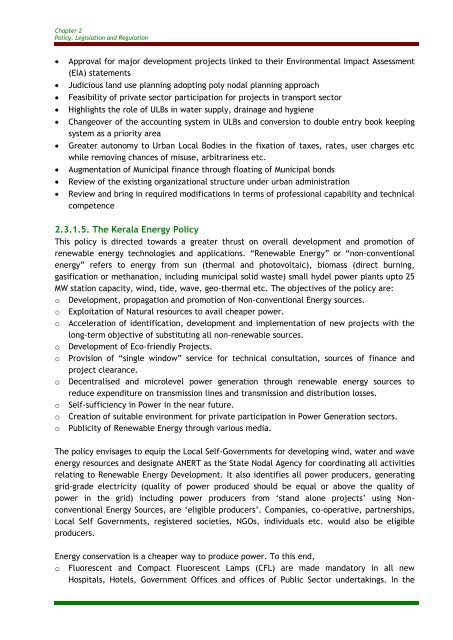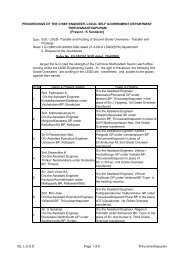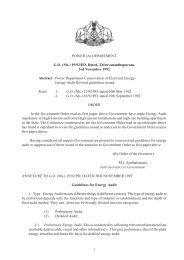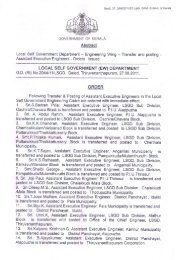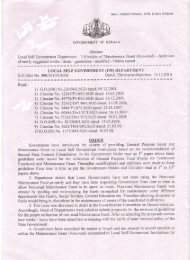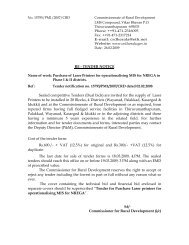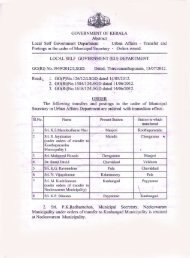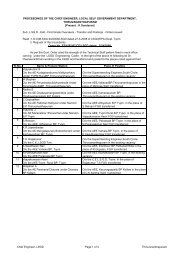Chapter 2 - Kerala Govt Logo
Chapter 2 - Kerala Govt Logo
Chapter 2 - Kerala Govt Logo
- No tags were found...
Create successful ePaper yourself
Turn your PDF publications into a flip-book with our unique Google optimized e-Paper software.
<strong>Chapter</strong> 2Policy, Legislation and RegulationApproval for major development projects linked to their Environmental Impact Assessment(EIA) statementsJudicious land use planning adopting poly nodal planning approachFeasibility of private sector participation for projects in transport sectorHighlights the role of ULBs in water supply, drainage and hygieneChangeover of the accounting system in ULBs and conversion to double entry book keepingsystem as a priority areaGreater autonomy to Urban Local Bodies in the fixation of taxes, rates, user charges etcwhile removing chances of misuse, arbitrariness etc.Augmentation of Municipal finance through floating of Municipal bondsReview of the existing organizational structure under urban administrationReview and bring in required modifications in terms of professional capability and technicalcompetence2.3.1.5. The <strong>Kerala</strong> Energy PolicyThis policy is directed towards a greater thrust on overall development and promotion ofrenewable energy technologies and applications. “Renewable Energy” or “non-conventionalenergy” refers to energy from sun (thermal and photovoltaic), biomass (direct burning,gasification or methanation, including municipal solid waste) small hydel power plants upto 25MW station capacity, wind, tide, wave, geo-thermal etc. The objectives of the policy are:o Development, propagation and promotion of Non-conventional Energy sources.o Exploitation of Natural resources to avail cheaper power.o Acceleration of identification, development and implementation of new projects with thelong-term objective of substituting all non-renewable sources.o Development of Eco-friendly Projects.o Provision of “single window” service for technical consultation, sources of finance andproject clearance.o Decentralised and microlevel power generation through renewable energy sources toreduce expenditure on transmission lines and transmission and distribution losses.o Self-sufficiency in Power in the near future.o Creation of suitable environment for private participation in Power Generation sectors.o Publicity of Renewable Energy through various media.The policy envisages to equip the Local Self-Governments for developing wind, water and waveenergy resources and designate ANERT as the State Nodal Agency for coordinating all activitiesrelating to Renewable Energy Development. It also identifies all power producers, generatinggrid-grade electricity (quality of power produced should be equal or above the quality ofpower in the grid) including power producers from „stand alone projects‟ using NonconventionalEnergy Sources, are „eligible producers‟. Companies, co-operative, partnerships,Local Self Governments, registered societies, NGOs, individuals etc. would also be eligibleproducers.Energy conservation is a cheaper way to produce power. To this end,o Fluorescent and Compact Fluorescent Lamps (CFL) are made mandatory in all newHospitals, Hotels, Government Offices and offices of Public Sector undertakings. In the


